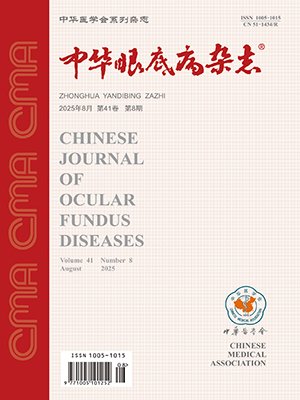Objective lt;br gt;To inspect the rate of success of anastomosis and tissue damage with different power levels of photocoagulation in the treatment of experimental branch retinal vein occlusion (BRVO) by laser induced chorioretinal venous anastomosis. lt;br gt;Methods lt;br gt;Forty pigmented rabbits (80 eyes) were divided into four groups in random, and 10 (20 eyes) in each. Chroioretinal venous anastomosis was attempted to create using the krypton red laser with 4 different power levels (group A: 400 mW,group B: 600 mW,group C: 800 mW,group D: 1000 mW) in these animals in which BRVO had previously been created photodynamically. Fundus photography and fundus fluorescein angiography were performed at various times after the treatment and histological examination was taken at the end of the study. lt;br gt;Results lt;br gt;The model of BRVO was successfully set up. At the lowest power of 400 mW there was an absence of anastomosis formation and the damage to the retina and choroid was mild, Bruch′s membrane showed no evidence of rupture. At the power levels of 600 mW and 800 mW an anastomosis formed in 15% and 55% respectively and the damage was medium in degree. At the highest power level of 1 000 mW a 80% rate of success was obtained, however, the damage to the retina and choroid tended to be severe.The difference of the rate of success of anastomosis between different groups was highly significant (P=0.001), the difference between group B and group C was also highly significant (PBC=0.008), and the difference between group A and group B, group C and group D was not significant (PAB=0.072、PCD=0.091). lt;br gt; lt;br gt;Conclusion lt;br gt;The optimal power level of krypton red laser induced chorioretinal venous anastomosis is 800 mW, 0.1 s, 50 μm in our study. lt;br gt; lt;br gt;(Chin J Ocul Fundus Dis,2002,18:13-16)
Citation: ZHANG Han,LIU Zheli.. Optimal laser energy for laser induced chorioretinal venous anastomos <br>is in the treatment of experimental branch retinal vein occlusion. Chinese Journal of Ocular Fundus Diseases, 2002, 18(1): 13-16. doi: Copy
Copyright © the editorial department of Chinese Journal of Ocular Fundus Diseases of West China Medical Publisher. All rights reserved




